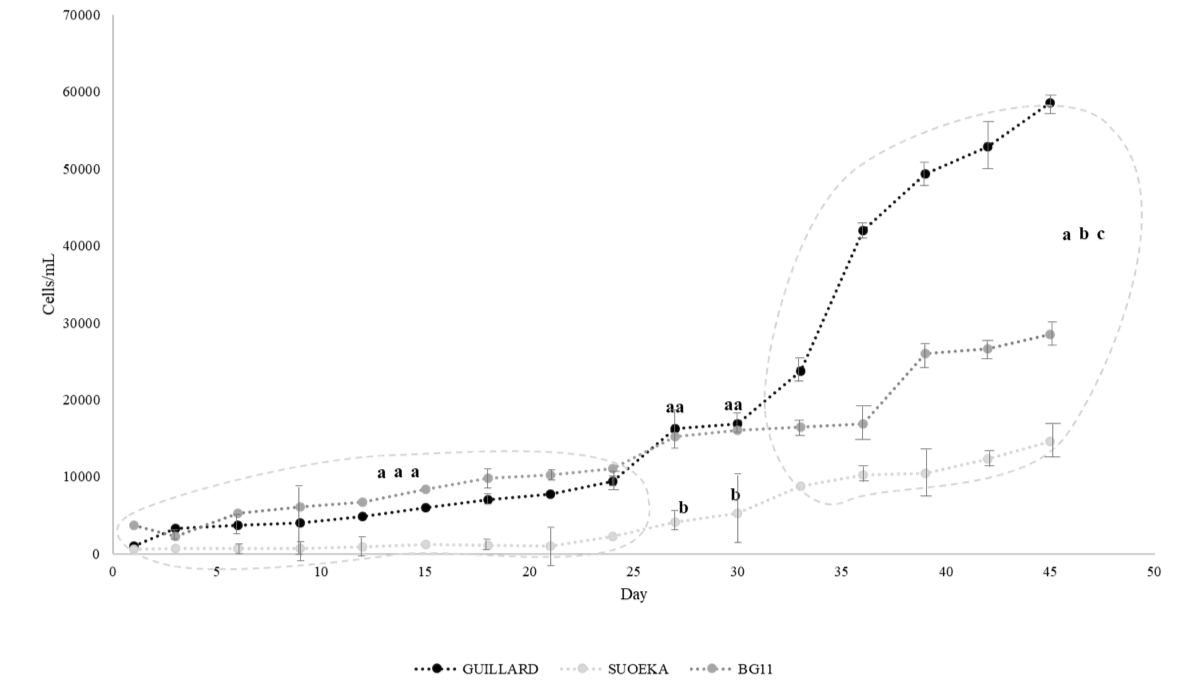 |
|
In the present work Verrucodesmus verrucosus was evaluated in mixed and autotrophic growth conditions as a suitable source of oil for biodiesel production, for this purpose three synthetic media were evaluated a lixiviated coming from a biodigester in three concentrations and the mix between synthetic media and the diferent concentrations of the lixiviated from biodigester, the evaluation of the kinetic parameters of growth was carried. So to, the nitrogen-lipid ratio was determined and lipid extraction. Finally, the fatty acid profile of the total pooled lipids was determined out using gas chromatography mass spectroscopy (GC-MS). The results demonstrate that the maximum cell density was reached in the Guillard medium with 6.0 x 104 cells / mL. On the other hand, the results in the production of lipids of the microalgal biomass showed that the BG11 medium with a nitrogen concentration of 0.23%, it is the best, since it produces up to 24.3% of lipids, finally, the Fatty acid profile shows that the highest concentrations of fatty acids in V. verrucosus were palmitic, oleic, stearic, palmitoleic and linoleic with a concentration of 34.9, 22.8, 9.3, 7.0 and 6.8% respectively, indicating the suitability of this species for biodiesel production.
Keywords: microalgal biomass, biodiesel, mixotrophic condition, autotrophic condition, fatty acids.
|
|
 |

